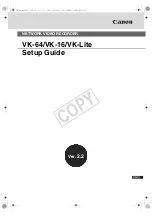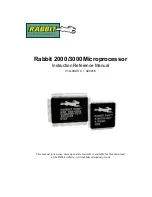
138
Indicators and Error Processing
Section 8-1
8-1
Indicators and Error Processing
The following table lists the indicator status when errors occur, the probable
causes and processing.
Indicator status
Probable cause
Remedy
MS: OFF
NS: OFF
The power is not being
supplied to the Unit.
Supply communications power from
the DeviceNet Communications con-
nector.
The power voltage is
not within the permitted
range.
Use a power supply voltage within the
permitted range.
The Unit is faulty.
Replace the Unit.
MS: Flashing green
NS: No change
The Temperature Con-
troller connection con-
figuration is not
registered.
If I/O allocations are to be set using
the Configurator, register the Temper-
ature Controller connection configura-
tion. (Refer to pages 45 to 68).
MS: Flashing red
NS: No change
A sum error has
occurred in the parame-
ters registered in
EEPROM.
Use the Configurator’s device monitor
to check the parameters with the sum
error or logic error, and reset the
parameters.
A EEPROM hardware
error has occurred.
Replace the Unit.
MS: ON red
NS: OFF
The Unit is faulty
Replace the Unit.
MS: ON green
NS: Flashing green
Waiting to connect to
DeviceNet communica-
tions.
Check the following items and restart
the Unit.
• Are lengths of cables (trunk and
branch lines) correct?
• Are cables short-circuited, broken,
or loose?
• Are cables wired correctly?
• Is terminating resistance connected
to both ends of the trunk line only?
• Is noise interference excessive?
• Is the power to the master ON?
The Unit is faulty.
Replace the Unit.
MS: ON green
NS: ON red
The DeviceNet is in Bus
Off status.
Check the following items and restart
the Unit.
• Are lengths of cables (trunk and
branch lines) correct?
• Are cables short-circuited, broken,
or loose?
• Is terminating resistance connected
to both ends of the trunk line only?
• Is noise interference excessive?
Node addresses dupli-
cated.
Reset node addresses correctly.
The Unit is faulty.
Replace the Unit.
MS: ON green
NS: Flashing red
A communications tim-
eout has occurred.
Check the following items and restart
the Unit.
• Are lengths of cables (trunk and
branch lines) correct?
• Are cables short-circuited, broken,
or loose?
• Is terminating resistance connected
to both ends of the trunk line only?
• Is noise interference excessive?
The Unit is faulty.
Replace the Unit.
Summary of Contents for EJ1 - 07-2008
Page 3: ...iv...
Page 19: ...xx...
Page 33: ...14 Initial Temperature Controller Settings Section 1 4...
Page 53: ...34 Wiring the Temperature Controllers Section 3 4...
Page 101: ...82 Ladder Programming Examples Section 4 6...
Page 143: ...124 Sending Explicit Messages Section 6 5...
Page 155: ...136 Message Communications Characteristics Section 7 2...
Page 163: ...144 Maintenance Section 8 2...
Page 189: ...170 Allocation Numbers for Configurators Manufactured by Other Companies Appendix B...
Page 197: ...178 Index...
















































